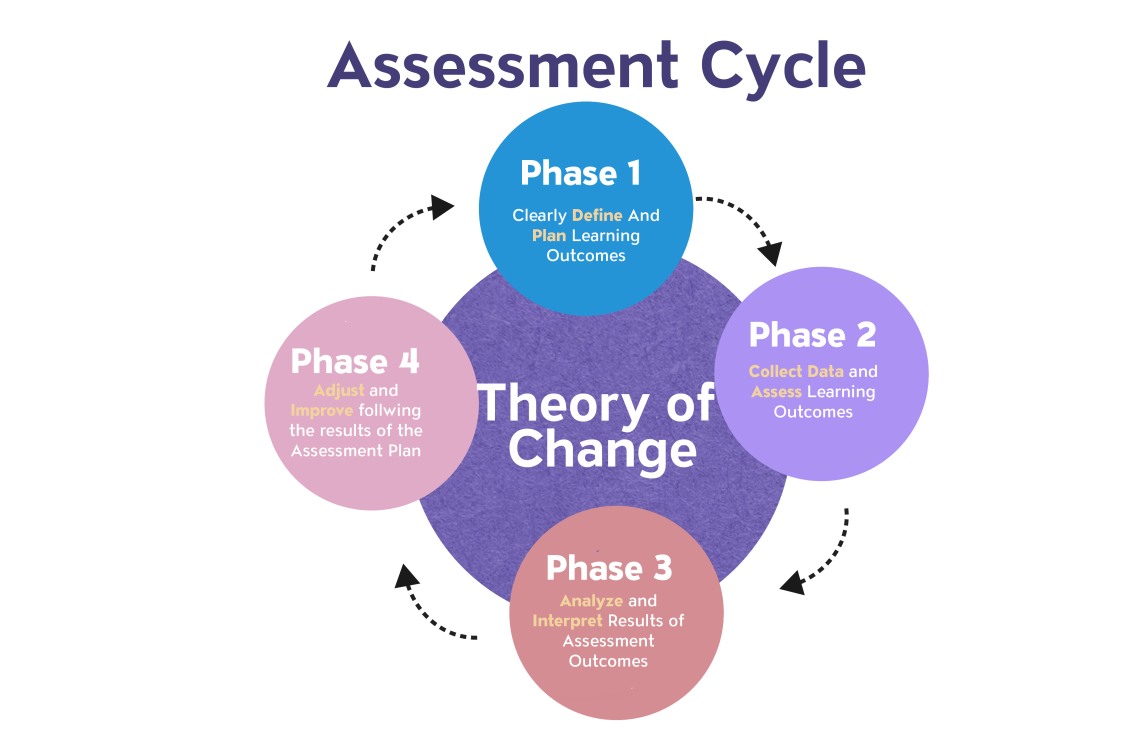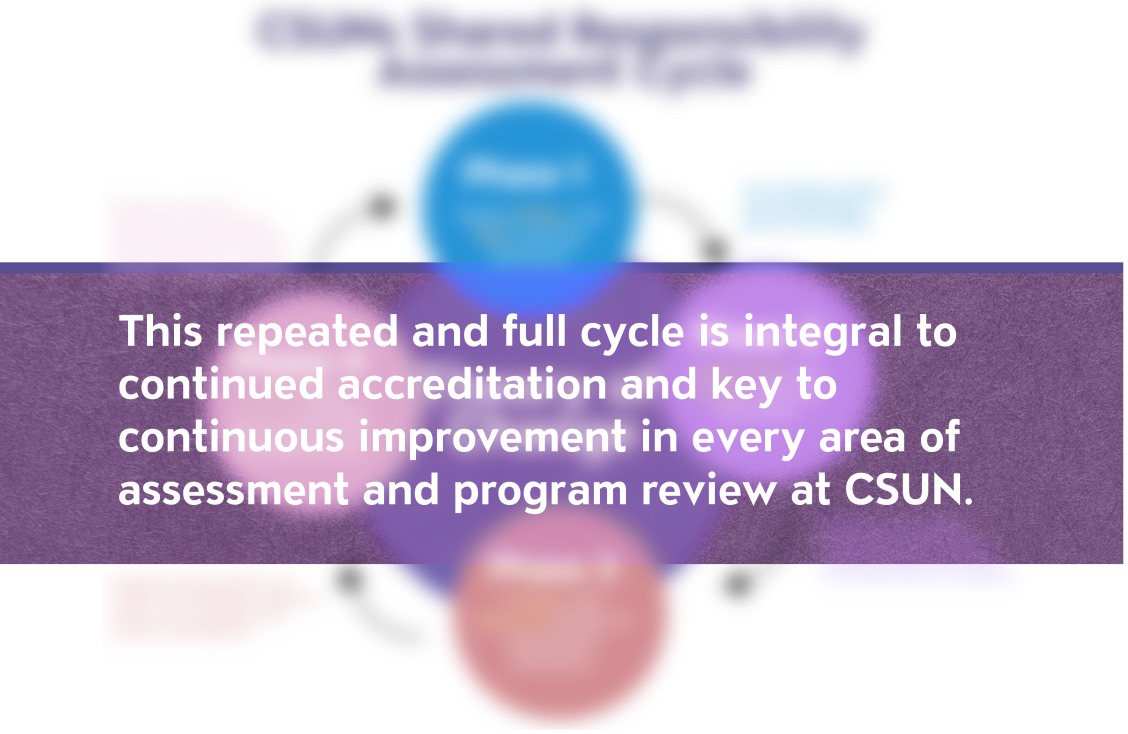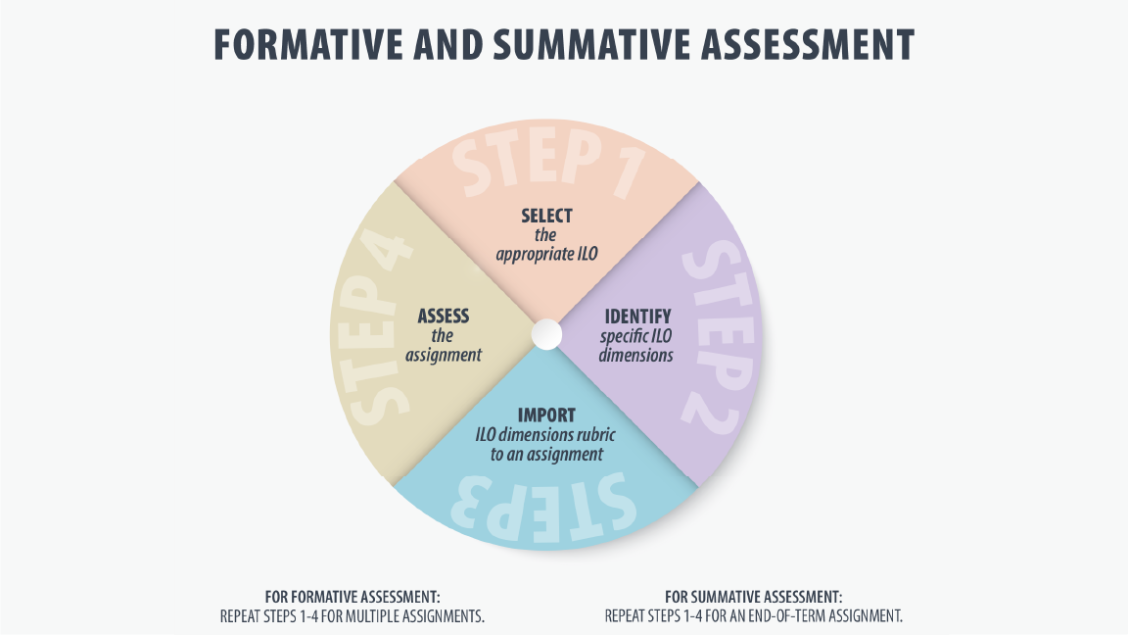Assessment is "the systematic collection, review, and use of information about educational programs undertaken for the purpose of improving student learning and development." Assessment allows us to articulate Institutional Learning Outcomes aligned to Program Learning Outcomes, collect data using varied assessment methods, and use the findings to improve student learning. It is an important driver of continuous improvement and data-based decision-making for the institution.
CSUN uses a formative and summative assessment model called iROCA (Instructors Reporting on Classroom Assessment) to understand the quality of student learning and how students learn for high-quality education. The OAAPR functions as support and guidance for integrating assessment in the classroom to produce real-time meaningful assessment results, including those related to learning outcomes. Annual academic assessment also provides data that support CSUN’s academic program review process.

"Why should we assess our academic programs?" is a common question across the country, and the answer is twofold: 1) accountability and 2) to improve student learning. Assessing our programs is a requirement of our accreditors and stakeholders, but it is not the only reason we should assess them. At CSUN, we meet our accountability requirements by improving student learning in our academic programs by aligning program learning outcomes to institutional learning outcomes.
The faculty in academic programs are normed to score student artifacts to identify program learning outcomes that students may be struggling or excelling to achieve. After reviewing the disaggregated assessment data, programs make changes (i.e., curricular, assessment processes, etc.). Then programs assess again to see if their changes were helpful. This process of assessing, making modifications, and re-assessing is the heart of the CSUNs assessment process.


1. Assessment Initiation: The Director of academic assessment and program review provides College Assessment Leads with guidance on assessment tasks, documents, templates, and self-paced videos for assessment. The OAAPR initiates the iROCA process by identifying the ILOs to be assessed for the year. The College Assessment Leads then support faculty in their respective colleges in collecting data using ILO dimension rubrics to score student artifacts.
2. Analysis: At the end of the assessment activities, OAAPR collects additional continuous improvement data from students and faculty. Data is cleaned, analyzed, and disaggregated to expand analytics, inform findings, and support program assessment efforts. These findings inform instruction and resource development where set targets have not been met.
3. Data Review & Feedback: Once the assessment data analysis is completed, departments can access results through CSUN LOADS (Learning Outcomes Assessment Dashboards).
4. Continuous Improvement Plan (CIP): The continuous improvement plan must be submitted by all academic degree programs. To ensure high-quality responses, plans are shared, reviewed, and approved by the Dean of the College. All CIPs are due July 1 annually and should be submitted to the OAAPR via email.
5. Archived Submissions: Approved CIPs are archived to inform the planning phase of the assessment process, resource allocation, program review, and accreditation reporting.








